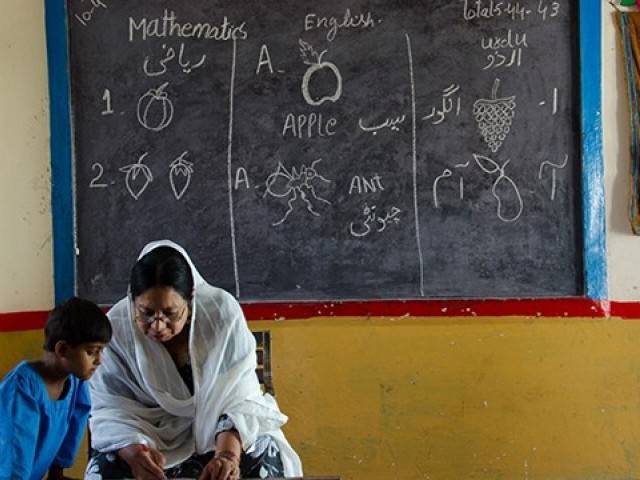
This was highlighted in the “2013-2018 Five years of education reform: Khyber-Pakhtunkhwa Wins, losses and challenges for the future 2018-2023”, a report published by the education campaign Alif Ailaan on Tuesday.
Based on the Education Sector Plan, from 2015-16 and 2019-20, the report said that the Khyber-Pakhtunkhwa (K-P) government has been largely focused on improving existing school infrastructure and facilities such as computer and science labs.
Lack of basic facilities in schools reduce enrolments
In an effort to provide quality instruction in classrooms, the report noted that the education department had tried to refine its teacher recruitment and training process by processing it through the national testing service (NTS) and involving multiple partners respectively. Moreover, to quantify the quality of education imparted at the lower levels, it had introduced standardized tests for fifth and eighth graders to assess learning outcomes.
These efforts, the report noted, were largely motivated by a need to strengthen the data monitoring mechanism through the Independent Monitoring Unit (IMU), and putting new management and evaluation systems in place to track progress.
Higher net spend
The report noted that the over the past five years, the K-P government was the only province which consistently allocated significant chunks of the budgets for education, higher than 20 per cent of its total budget, in line with the guidelines provided by the by United Nations Educational, Scientific and Cultural Organisation (UNESCO) Global Monitoring Report.
New buses but education remains immobile
Increased allocation of the education budget to districts, the report noted, was also commendable since it made the education system more responsive.
Moreover, to improve retention of girls at secondary schools, stipends were being provided to students under a Rs1.72 billion initiative, and community schools were set up in remote districts to drive primary enrolment of girls.
Challenges
Despite these efforts, the report noted that the government still faced certain challenges which require urgent attention of K-P’s lawmakers.
The report said that the issue of out-of-school children and high levels of student attrition beyond primary schools due to the absence of schools and facilities continue to plague the sector.
Published in The Express Tribune, March 21st, 2018.




1732745394-0/Diddy-(4)1732745394-0-165x106.webp)






COMMENTS
Comments are moderated and generally will be posted if they are on-topic and not abusive.
For more information, please see our Comments FAQ